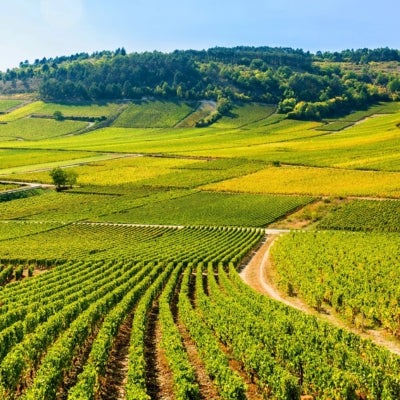
An introduction to terroir
In this first part of our series on terroir, Westgarth Wines specialist Maurizio Broggi introduces the concept, its diverse usage and influence.
Terroir, a French term derived from the word terre meaning "land," encompasses the entire natural environment of a vineyard. This concept is frequently cited as a primary factor contributing to the exceptional quality and distinctive character of many Old World wines, particularly those from France.
In the Old World, terroir is widely regarded as a fundamental element that is believed to impart a unique "DNA" to a given wine, ensuring consistent characteristics across vintages. This principle has been adopted as a cornerstone of the French Appellation d'Origine Contrôlée system, which regulates wine production based on geographic region and specific qualities associated with that terroir.
Defining terroir
There is no universally accepted definition of terroir. The traditional Old World understanding of terroir can be challenging to comprehend.
This difficulty stems, in part, from the diverse usage and interpretations of the term. Disagreements persist not only regarding the definition and existence of terroir but also concerning its constituent elements and its potential influence on the final wine product.
Understanding terroir
A comprehensive approach to understanding terroir involves recognizing its fundamental implication: a wine's intrinsic qualities, character, and tasting profile are inherently linked to the specific location where the grapes are cultivated.
The concept of single vineyard wines is deeply rooted in the belief that a specific terroir can be uniquely expressed and is worthy of bottling as a standalone product. While the notion that an agricultural product is influenced by its place of origin might seem self-evident, the concept of terroir extends beyond this and incorporates two additional essential perspectives: sense of place and non-replicability.
Indeed, one of the most commonly accepted definitions of terroir is its ability to confer a distinct sense of place upon a wine. Moreover, the term's historical meaning suggests that the unique characteristics imparted by a specific terroir cannot be replicated elsewhere.
Burgundy and terroir
In the Old World, terroir is often considered an absolute, unchanging, and immutable factor that imparts uniqueness to wines produced in a specific region.
Burgundy frequently serves as an illustrative example of terroir's influence. Despite most growers employing similar viticultural and winemaking techniques, terroir can account for the discernible variations in quality, style and character observed among wines produced from vineyard plots that are just a few meters apart.
Over the centuries, local winemakers have observed that certain vineyards within Burgundy consistently outperformed others, leading to the establishment of the classification in Premier Cru and Grand Cru vineyards.
While these distinctions were initially based on empirical observations, subsequent studies of Burgundy's soil and geology have revealed that many of the superior qualities of the vineyards in Burgundy are largely due to the unique soil properties in conjunction with the local topography. This explains why neighboring vineyard plots in close proximity can produce wines with distinct characteristics and varying quality levels, often maintaining these differences across vintages.
Terroir vs typicity
The significance and meaning of terroir should be evaluated in conjunction with the geographical scale.
While terroir is often invoked in discussions of Burgundy to differentiate wines from different Grand Cru vineyards and villages, some also apply the concept to explain and compare distinctions between broader regions, such as Burgundian Chardonnay versus California Chardonnay.
This brings us to another potential source of confusion: the fact that sometimes the concept of terroir overlaps with the concept of ‘typicity’.
Typicity can be defined as a wine's sensory profile that reflects its geographical origin and style. While typicity is undoubtedly influenced by location, climate, soil, and topography, it is also significantly shaped by viticultural and winemaking practices. Within specific regions and official appellations, growers and producers tend to adopt (and sometimes are required) similar techniques and practices, contributing to the development of a distinctive regional style.
Although terroir and typicity may intersect and share certain elements, typicity should be more correctly associated with larger areas such as regions or appellations and appears to be more influenced by human intervention than terroir, which is fundamentally rooted in the physical characteristics of the vineyard site.
Stay tuned for part II of our terroir series, which explores the influence of human intervention, soils and topography.
Want to read more? Take a look at some of our other blogs:



